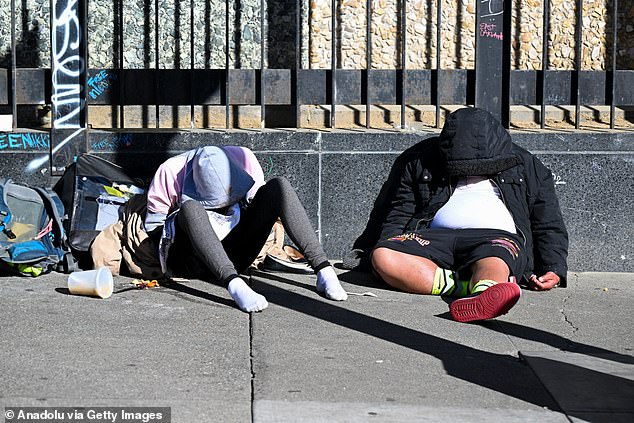Tiny home, HUGE cost: Fury at $113,000 price of San Francisco’s new homeless cabins, which won’t make a dent in the crisis
San Francisco residents are pushing back against the skyrocketing cost of the city’s new homeless shelters.
A complex of sixty “tiny homes” for unhoused Californians cost taxpayers an eye-watering $113,000 each.
That’s several times higher than the price of comparable cabins in nearby Oakland and San Jose.
Even worse, the new project in the Mission District will cost $2.9 million per year.
Yet ultra-liberal Mayor London Breed and others support the controversial and long-delayed project.
Each unit has a lockable door, a bed, storage space, furniture, sockets and heating

Mayor London Breed says the $113,000 per hut plan will provide a ‘safe, stable environment’ for 50 homeless people
Marc Joffe, an analyst at the libertarian think tank Cato Institute, called it a massive overspending.
“If SF can’t house the homeless in a cost-effective manner, perhaps another county in California can,” he posted on X/Twitter.
Ten unhoused people moved into the village early this week, housing department spokeswoman Emily Cohen told the San Francisco Chronicle.
Five more unhoused people arrive every day until all 60 huts are occupied.
Each home has a lockable door, a bed, storage space, furniture, sockets and heating.
Residents will share bathrooms, a dining area and washing machines and will receive meals on site.
The costly plan will be scrapped in two years, when developers break ground on an affordable housing project.
Mayor Breed said the temporary shelters would help “get people off the streets and into a safe, stable environment.”
“They can move toward a safer, long-term housed environment,” she added.
The Mission District is plagued by visible tents, open drug use, the sale of illegal goods and other quality of life problems.

San Francisco is grappling with a deadly wave of drug use among its 8,000 homeless people
Supervisor Hillary Ronen, who represents the district, supports the homeless village but calls the cost of the units “insane.”
Bay Area cities, including San Jose and Oakland, have embraced small cabin villages in recent years as a cheaper solution to the crisis.
Advocates say they offer unhoused people a dignified alternative to mass shelters, which lack privacy and where residents can face property theft and violence.
The opening of the San Francisco location comes as California faces a crisis of homelessness and vagrancy.
Homelessness rose 6 percent last year to more than 180,000 people in California, federal data show.
Since 2013, the numbers have exploded by 53 percent.
Nearly 28 percent of the nation’s entire unhoused population is in the Golden State.
There are approximately 8,000 homeless people in San Francisco alone.

Supervisor Hillary Ronen, who represents downtown, supports the homeless village but calls the cost of units ‘insane’
That’s why the costly new tiny house complex will hardly make a dent in the city’s crisis.
San Francisco has added more than 1,000 temporary shelter beds in the past six years.
Officials estimated last year that 6,000 new homes and beds would be needed and it would cost more than $1 billion to end the crisis.
Auditors this month panned California’s failed attempts to address the problem
The state spent $24 billion tackling homelessness over the past five years but failed to track whether the money was helping the growing number of unhoused people, their damning report said.
It criticized the state’s homelessness czars for spending billions on 30 programs between 2018 and 2023, but no data was collected on why the money failed to address the crisis.
It confirmed what is clear to many residents: the homelessness crisis is out of control, and that tent encampments and troublesome vagrancy in big cities are bad and getting worse.
